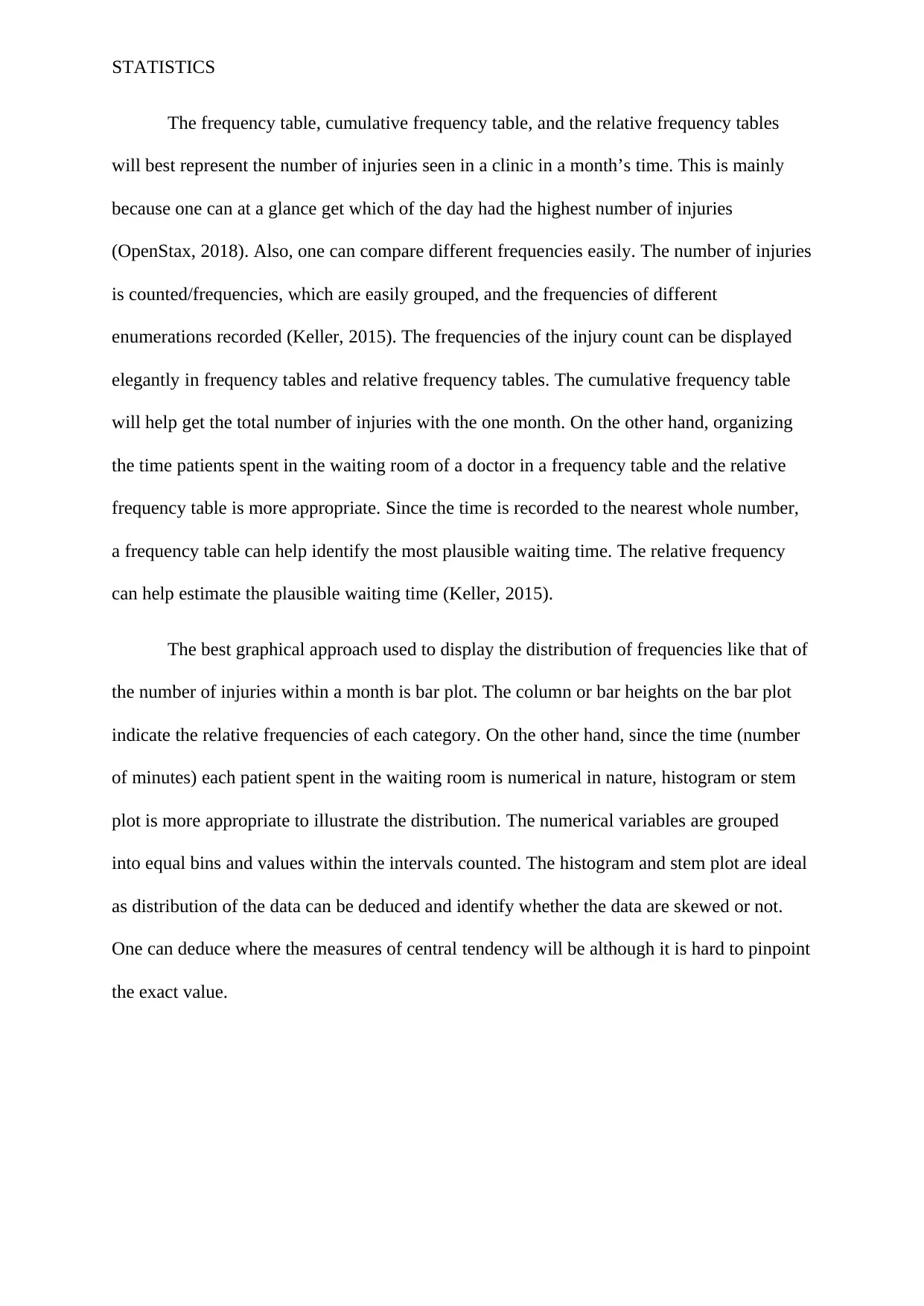Statistics Assignment: Data Analysis and Presentation Techniques
VerifiedAdded on 2022/11/16
|3
|385
|90
Homework Assignment
AI Summary
This assignment delves into the effective representation of data using statistical tools. The student analyzes two datasets: clinic injury counts and patient waiting times, proposing the use of frequency, cumulative frequency, and relative frequency tables to organize the data. The assignment emphasizes the importance of choosing the appropriate table type based on the data's nature and the insights desired. Furthermore, the student recommends using bar plots for injury data and histograms or stem plots for waiting time data, explaining how these graphs help visualize data distributions and identify patterns. The assignment uses the OpenStax book and an additional scholarly source as references. The student explains the rationale behind each choice, highlighting the benefits of each method for data analysis and presentation.
1 out of 3










![[object Object]](/_next/static/media/star-bottom.7253800d.svg)